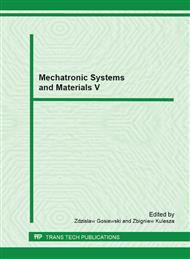p.229
p.235
p.241
p.247
p.253
p.261
p.267
p.273
p.279
Visualization of the Workpieces on the CNC Machines Using the Virtual Camera Based on the Sub-Pixel IBR Method
Abstract:
One of the results of the dynamic progress in the field of industrial and applied computer science and mechatronics is the growing interest in usage of the machine vision algorithms and systems. One of such areas of applications is the positioning of the workpieces on the CNC machines based on the image analysis, allowing also the visualization of the workpiece observed from an arbitrary viewpoint located between two or more cameras. Such virtual camera can be effectively implemented using Image Based Rendering technology [ but one of its limitations is the necessity of using the depth maps, which have to be acquired for each reference image. It can be done using the additional fringe patterns projector, similarly as in typical 3D scanning systems or using some other approaches e.g. stereovision. Nevertheless, the quality of images obtained using the typical IBR method is limited by the missing pixels (holes), which should be filled using splatting algorithm, which typically cause the noticeable blurring of obtained image. The solution proposed and discussed in this paper is based on the sub-pixel IBR method with additional filtering and interpolation of the points acquired from the reference cameras allowing increasing the quality of the final images obtained as the visualization of the positioned workpieces.
Info:
Periodical:
Pages:
253-258
Citation:
Online since:
March 2013
Authors:
Keywords:
Price:
Сopyright:
© 2013 Trans Tech Publications Ltd. All Rights Reserved
Share:
Citation:


